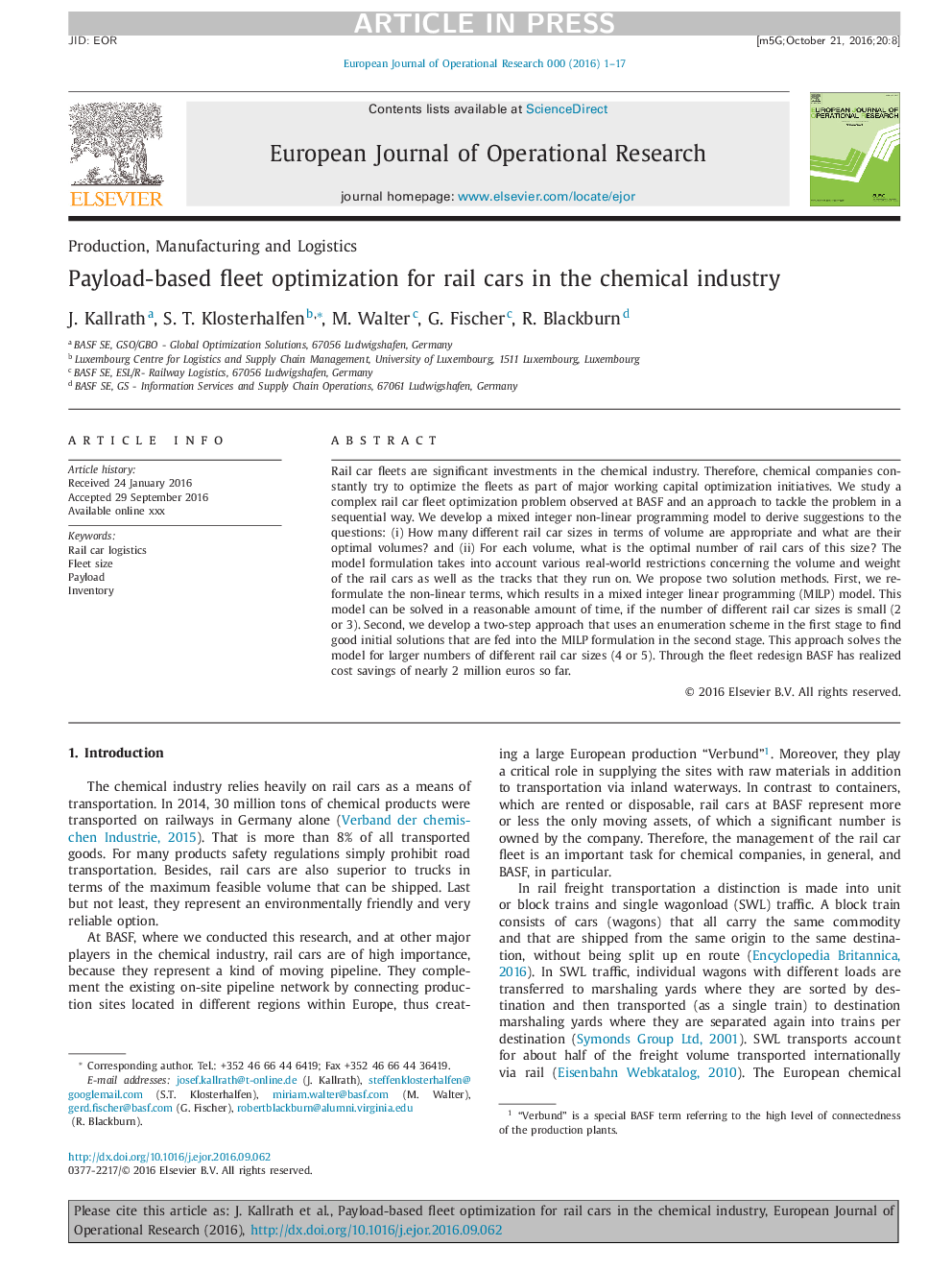| Article ID | Journal | Published Year | Pages | File Type |
|---|---|---|---|---|
| 4959917 | European Journal of Operational Research | 2017 | 17 Pages |
Abstract
Rail car fleets are significant investments in the chemical industry. Therefore, chemical companies constantly try to optimize the fleets as part of major working capital optimization initiatives. We study a complex rail car fleet optimization problem observed at BASF and an approach to tackle the problem in a sequential way. We develop a mixed integer non-linear programming model to derive suggestions to the questions: (i) How many different rail car sizes in terms of volume are appropriate and what are their optimal volumes? and (ii) For each volume, what is the optimal number of rail cars of this size? The model formulation takes into account various real-world restrictions concerning the volume and weight of the rail cars as well as the tracks that they run on. We propose two solution methods. First, we reformulate the non-linear terms, which results in a mixed integer linear programming (MILP) model. This model can be solved in a reasonable amount of time, if the number of different rail car sizes is small (2 or 3). Second, we develop a two-step approach that uses an enumeration scheme in the first stage to find good initial solutions that are fed into the MILP formulation in the second stage. This approach solves the model for larger numbers of different rail car sizes (4 or 5). Through the fleet redesign BASF has realized cost savings of nearly 2 million euros so far.
Keywords
Related Topics
Physical Sciences and Engineering
Computer Science
Computer Science (General)
Authors
J. Kallrath, S.T. Klosterhalfen, M. Walter, G. Fischer, R. Blackburn,
